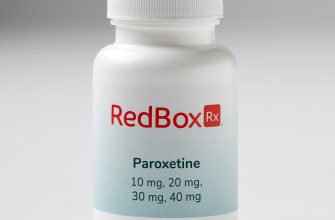Need to understand furosemide quickly? It’s a powerful diuretic, primarily used to treat fluid retention (edema) associated with heart failure, liver disease, or kidney disorders. This means it helps your body get rid of excess water and salt.
Dosage varies significantly depending on your condition and individual response. Your doctor will determine the appropriate dose, typically starting with a lower amount and gradually increasing as needed. Common administration methods include oral tablets and intravenous injections. Always follow your doctor’s instructions precisely.
Important note: Furosemide carries potential side effects, including dehydration, low blood pressure, and electrolyte imbalances. Regular monitoring of your blood pressure and electrolyte levels is crucial, especially during initial treatment. Report any concerning symptoms, like dizziness, muscle weakness, or irregular heartbeat, immediately to your physician.
Remember: This information is for educational purposes only and does not substitute professional medical advice. Consult your doctor or pharmacist before starting or altering your furosemide regimen. They can tailor the treatment plan to your specific needs and health status, ensuring safe and effective use.
- Mechanism of Action and Pharmacokinetics
- Mechanism of Action
- Pharmacokinetics
- Therapeutic Uses and Indications
- Heart Failure
- Hypertension
- Edema
- Other Conditions
- Important Considerations
- Adverse Effects and Drug Interactions
- Electrolyte Imbalances
- Drug Interactions
- Monitoring and Management
- Dosage, Administration, and Patient Monitoring
- Oral Administration
- Intravenous Administration
- Patient Monitoring
- Specific Monitoring Considerations
Mechanism of Action and Pharmacokinetics
Furosemide powerfully inhibits sodium and chloride reabsorption in the thick ascending limb of the loop of Henle. This action directly increases the excretion of sodium, chloride, potassium, magnesium, and calcium in the urine.
Mechanism of Action
- It blocks the Na+/K+/2Cl− cotransporter, a crucial protein responsible for active reabsorption of these ions.
- This blockage prevents the reabsorption of significant amounts of water, resulting in a potent diuretic effect.
- The magnitude of diuresis directly correlates with the dose administered.
Pharmacokinetics
Absorption after oral administration is rapid, reaching peak plasma concentrations within 1-2 hours. Bioavailability is approximately 60-70% and isn’t significantly affected by food.
- Furosemide is extensively bound to plasma proteins (91-99%).
- It’s metabolized in the liver, with a half-life ranging from 0.5 to 2 hours.
- Elimination occurs primarily through renal excretion, with a small amount excreted unchanged in the feces.
Note that the pharmacokinetic profile can be altered in patients with impaired renal or hepatic function. Elderly individuals often experience prolonged drug elimination, necessitating dose adjustments.
- Dosage should be carefully tailored to individual patient needs and response, considering potential drug interactions.
- Regular monitoring of electrolyte levels is crucial to detect and manage potential adverse effects, such as hypokalemia and hyponatremia.
- Patients should be advised of potential side effects and the importance of adhering to prescribed dosage and administration schedule.
Therapeutic Uses and Indications
Furosemide primarily treats fluid overload conditions. This powerful diuretic effectively removes excess fluid from the body by increasing urine production. Its mechanism involves inhibiting sodium and chloride reabsorption in the loop of Henle.
Heart Failure
In heart failure, furosemide reduces symptoms like shortness of breath and swelling by decreasing fluid buildup in the lungs and extremities. Dosage adjustments are frequently necessary based on individual response and kidney function.
Hypertension
Furosemide also plays a role in managing high blood pressure. By lowering blood volume, it helps reduce the strain on the cardiovascular system. This is often used in combination with other antihypertensive medications.
Edema
Various types of edema, including that associated with liver disease (cirrhosis), kidney disease (nephrosis), and premenstrual syndrome, often respond well to furosemide’s fluid-reducing capabilities. Monitoring potassium levels is crucial during treatment.
Other Conditions
Furosemide finds applications in other conditions requiring diuresis, such as pulmonary edema, hypercalcemia, and certain types of poisoning. Always consult a physician before using furosemide for any condition. The medication is available in various forms, including tablets and injections.
Important Considerations
Caution: Furosemide can cause dehydration, electrolyte imbalances (particularly low potassium), and hearing loss. Regular monitoring of electrolytes and kidney function is recommended. Potential drug interactions exist with other medications, so inform your doctor about all your current medications and supplements.
Adverse Effects and Drug Interactions
Furosemide, while effective, carries potential side effects. Commonly reported are dehydration, dizziness, and low blood pressure. These usually subside with dose adjustment or discontinuation. Severe reactions, though rare, include hearing loss and kidney problems. Regular monitoring of electrolyte levels (potassium, sodium) is critical.
Electrolyte Imbalances
Furosemide’s diuretic action significantly impacts electrolyte balance. Hypokalemia (low potassium) is a particular concern, potentially leading to muscle weakness and irregular heartbeat. Regular blood tests help detect and manage this. Dietary potassium supplementation or potassium-sparing diuretics might be necessary. Similarly, hyponatremia (low sodium) can cause nausea, confusion, and seizures, requiring careful monitoring and fluid management.
Drug Interactions
Furosemide interacts with several medications. Concurrent use with lithium increases lithium levels, potentially causing toxicity. Interactions with aminoglycoside antibiotics can worsen hearing impairment. Nonsteroidal anti-inflammatory drugs (NSAIDs) may reduce furosemide’s effectiveness. Always inform your doctor of all medications you take to prevent adverse interactions. This includes over-the-counter drugs and herbal supplements.
Monitoring and Management
Regular monitoring of blood pressure, kidney function, and electrolyte levels is paramount during furosemide treatment. This allows for timely adjustments to prevent or manage adverse effects. Open communication with your healthcare provider is crucial. Report any unusual symptoms immediately to ensure appropriate intervention.
Dosage, Administration, and Patient Monitoring
Furosemide dosage depends heavily on the patient’s condition and response. Typical starting doses range from 20 to 80 mg orally, once or twice daily. Higher doses may be necessary, up to 600 mg daily, but this should be done under close medical supervision. Intravenous administration is faster, using doses similar to oral administration. Always follow prescribed dosage carefully; never alter it without consulting a physician.
Oral Administration
Administer furosemide orally with a full glass of water. Patients should take it at the same time each day to maintain consistent blood levels. Food may affect absorption; discuss timing with your doctor.
Intravenous Administration
Intravenous administration should be slow, over at least 1-2 minutes, to avoid hypotension. Rapid injection can cause serious adverse effects. Monitor blood pressure closely during and after administration.
Patient Monitoring
Regular monitoring is vital. Closely observe patients for signs of dehydration, including decreased urine output, dizziness, and hypotension. Monitor electrolyte levels, particularly potassium, sodium, and chloride, frequently because furosemide can cause significant electrolyte imbalances. Regular blood pressure checks are also necessary. Report any abnormal findings to the prescribing physician immediately. Weight monitoring can track fluid balance effectiveness.
Specific Monitoring Considerations
Patients with liver or kidney disease require especially careful monitoring. The dose may need to be adjusted downward, and more frequent electrolyte checks are necessary. The elderly and those with heart conditions are also at increased risk of complications and need close monitoring. Regular assessment of fluid balance and electrolyte levels are key to safe furosemide use.










